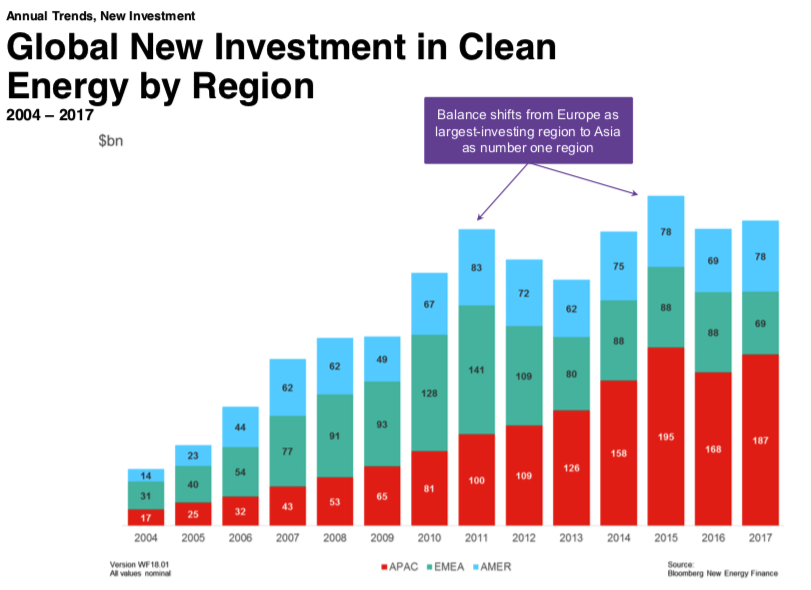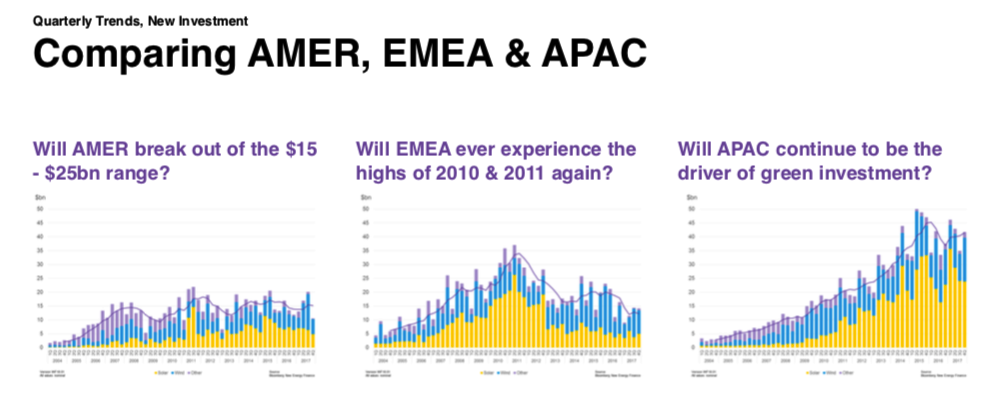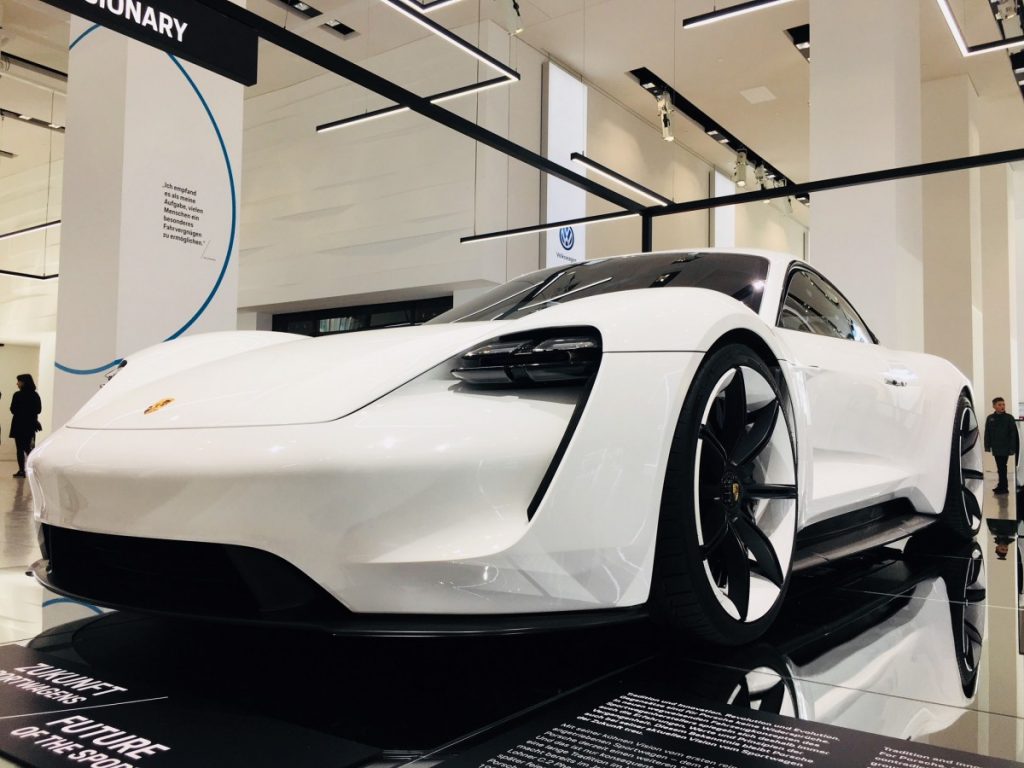Asia Pacific (APAC) takes the lead and holds it when it comes to renewable energy investment globally. While this is a major boom to the economies of Asia, it’s a loss that the Americans and Europeans are not investing similar amounts.
Trends Point to Asia
The global leaders in solar panel production have already shifted from Germany to China (around 2012 the shift began) and a similar phenomenon may be in the process for wind energy. The largest wind turbine manufacturer in the world is Vestas – located in Denmark. However, for one year in 2015 the Chinese firm Goldwind – headquartered in Beijing – was the largest wind turbine manufacturer in the world. While there is more likely to be regional strongholds in the wind turbine production due to the size of turbines and requirements to manufacture locally, it’s interesting to note the shifting areas of expertise again drifting towards China and Asia. Follow the money. Furthermore, follow the investment, and see where the future money will be.

Between 2011 and 2014 the global leadership position of investment into renewable energy shifted to the Asia Pacific region (APAC) – and the Asian investors have never looked back. This is a sorry state of affairs for two regions who had a decade-long lead to invest in renewable energy.

Every quarter since Q2 2014 through the end of 2017, APAC has enjoyed at least $32 Billion in renewable energy investment, with the largest quarterly investment hitting $50 Billion. To put that into perspective, the Americas have never made more than $22 Billion in RE investment – ever. EMEA (Europe, Middle East and Africa) peaked historically in the $35 Billion / quarter investment range – however that was in 2010 and 2011.
Europe has given up its leadership position in renewable energy investment and the Americas still lag behind, investing less than 1/2 of was Asians did in renewables in 2017. This is a huge opportunity for the USA to take a leadership role in investment, production and high-tech expertise related to these industries. Will we get the investment dollars to make it happen? Will we get the political support to boost our economy in the RE sector?
The advantages from renewables are threefold:
- Grow energy jobs now
- Reduce energy costs in the short run and long run
- Reduce pollution and greenhouse gas emissions
Investing in renewables is a win-win-win. Let’s hope that the USA will begin to take a leadership role in bringing the Americas to the top of this investment list.
Graham Majorhart is the co-founder of Carby Box, the first way to become carbon neutral through Amazon.com



